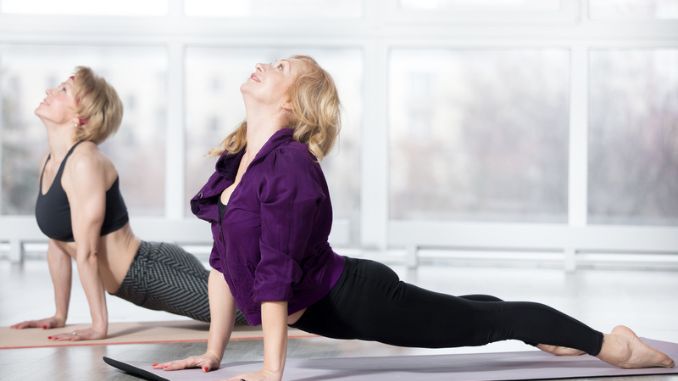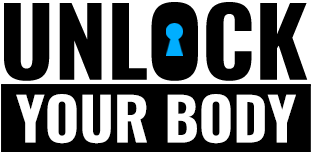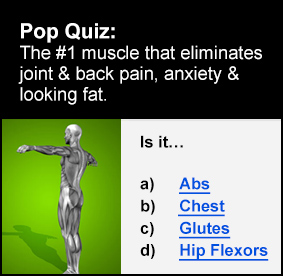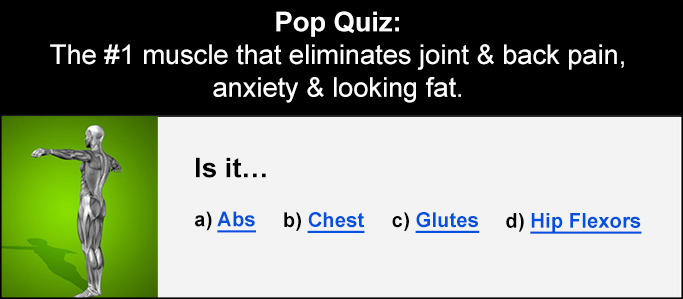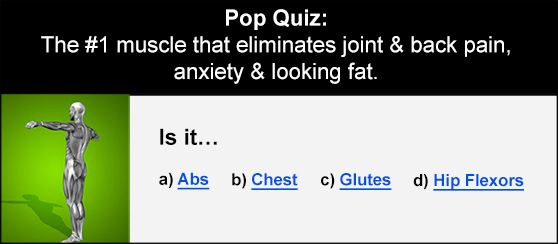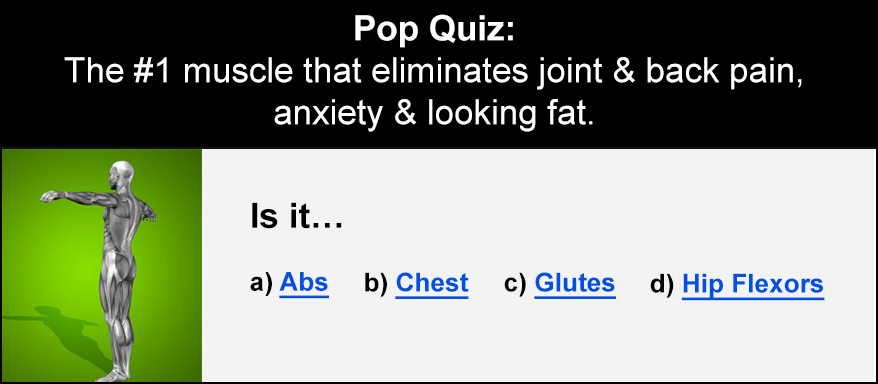There are simple exercises that you can try on how to relieve lower back pain.
The lumbar region, also known as the lower back, is situated under the ribcage. When lifting heavy weights with incorrect posture, this region is prone to acute strains that can result in low back pain. Also, a variety of other circumstances, like illness or trauma, can cause discomfort in the lower back. These injuries or conditions most commonly affect the muscles or ligaments in the back.
Most people experience back pain at some stage in their life. While most people experience some degree of discomfort in this area at some stage of their life, there are preventative measures that can be taken to reduce the likelihood of this occurrence.
You can do some simple exercises almost anywhere. Whether sitting at home or out on the go, you can easily incorporate these simple exercises into your daily routine and feel relief in no time.
Low back pain is one of the most common medical complaints, with up to 80% of adults experiencing it at some point in their lives, and this may be due to a sedentary lifestyle. To prevent this, it’s important to incorporate lower back pain exercises into our daily routine. Doing so will help strengthen the muscles in your back and core, increase your mobility, and reduce the risk of injury. Thankfully, you can do these simple low back exercises that focus on strengthening the core, stretching tight muscles, and improving your posture with no equipment. So, don’t let low back pain bring you down – get up, try these simple exercises, and get back to feeling your best!
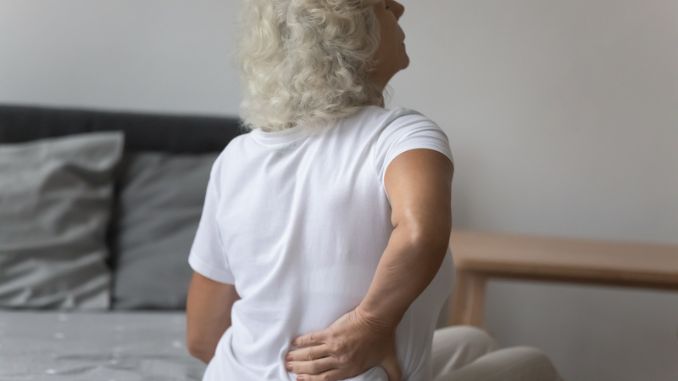
What Causes Low Back Pain?
Numerous types of harm, illnesses, and conditions can be the cause of lower back pain. These include:
- Form issues: Spinal stenosis is a condition in which the spinal column is so constricted that it does not provide enough space for the spinal cord. Compression of the spinal cord can lead to significant sciatic nerve pain and lower back pain. Additionally, scoliosis, the bending of the spine, can create difficulties in movement and cause soreness and achy sensations.
- Disk Problems: The vertebrae (small bones along the spine) have a layer of disks between them that provide cushioning. If these disks move out of their normal position, they can press on a nerve and even tear tissue. As people age, the disks flatten out and offer less support, known as degenerative disk disease.
- Back Strains and Sprains: Back injuries, such as strains and sprains, are the most common source of back soreness. If you lift something too heavy and do not lift it correctly, you can harm the muscles, tendons, or ligaments. People can also damage their backs with sudden, jarring movements like sneezing, coughing, twisting, or bending over.
- Poor Posture: Bad posture is a leading cause of low back pain. Many people stand, walk, and sit with their backs in a reclined or rounded position, which puts added pressure on the spine. Bad posture can lead to injuries, joint problems, and upper and lower back muscle strains.
- Arthritis: Osteoarthritis is the most prevalent form of arthritis and can lead to lower back discomfort. Ankylosing spondylitis is an ailment that results in soreness, tightness, and lower back pain in the spine.
- Tight Muscles: When your muscles are tight and stiff, it can cause joint friction and pain. This can especially be the case in the lower back, where the muscles are often overworked and under-stretched.
- Spondylolisthesis: This condition results in the vertebrae of the spine becoming misaligned, often resulting in discomfort in the lower back that can extend to the legs.
- Ruptures: Traumatic events, like car accidents or falls, can cause damage to the vertebrae in the spinal column. Those with certain medical conditions, like spondylolysis or osteoporosis, are at a higher risk of sustaining fractures.
- Illness: Back pain can be caused by various medical issues, such as tumors on the spine, bacterial and viral infections, cancers, kidney stones, and abdominal aortic aneurysms (an enlargement of the aorta, the primary artery that extends from the heart to the chest and abdomen).
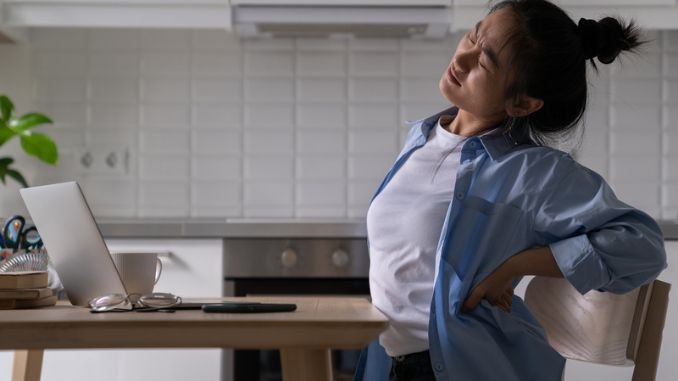
Benefits of Exercise for Low Back Pain
When done correctly, exercise can significantly reduce the occurrence and severity of low back pain. They strengthen your core and lower back muscles, improve your posture, and increase your mobility. Exercise can also help you to improve your overall posture, manage your stress levels, and improve your mood and energy levels.
The following are some of the many benefits associated with regular exercise for low back pain.
- Back and Spinal Movement: Even if you are tempted to take a break, it is beneficial for your back to stay active. Specific exercises to treat lower back pain can help strengthen the muscles in your back, abdomen and legs. Doing these exercises can also contribute to stabilizing your spine.
- Support Better Functionality: Supporting better functionality can be a great way to improve low back pain. Exercise and stretches are great for alleviating this pain, but the right kind of support is also important.
- Improved Posture: When your muscles are stronger and more flexible, they will help to correct your posture, making it easier to stand and sit up straight. This can reduce pressure on the spine and help to prevent and relieve low back pain. Good posture is important for back health.
- Stronger Muscles: Stronger muscles help to support your back and make it easier to move around and lift heavy objects. They can also prevent future injuries and strain.
- Better Mood: Regular exercise can help improve your mood and reduce stress and anxiety levels. This can make it easier to cope with chronic pain and lead to a better quality of life.
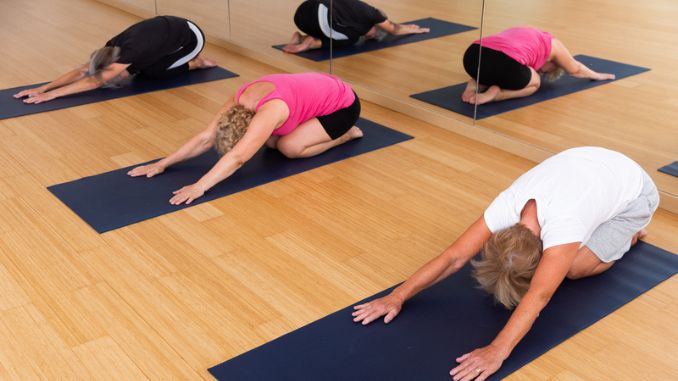
Are Body-Weight Exercises Effective?
Utilizing your body mass to build strength is the basis of many exercises. By starting with uncomplicated movements, muscles, particularly in the core and lower back, are strengthened gradually.
Studies have indicated that exercise utilizing body weight may be advantageous, risk-free, and cost-efficient for lower back pain. Researchers also found that resistance training using body-weight can help build muscle.
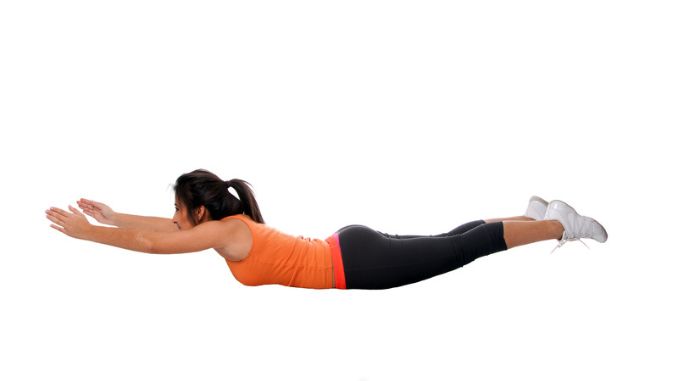
Tips for Lower Back Pain Exercises
Find a time that works best for you to exercise. Some people do better in the mornings, while others prefer the evenings. Try several times of day and determine what you prefer. Keep your workout short at first, completing exercises for 5 to 10 minutes, and gradually increase the length of your routine as you improve. Focus on quality over quantity. Doing too many exercises or too much at once can increase your injury risk. Keep a journal. Writing down when you exercised and how you felt afterwards can help you stay consistent. Bodyweight exercises are advisable, but you can always opt to use the right equipment. Using light weights, resistance bands, or yoga mats for stretching can help you stay safe.
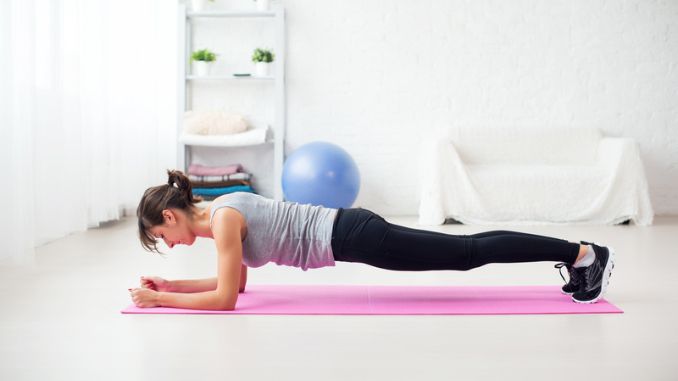
Simple Exercises for Low Back Pain Relief
No equipment is needed! Thankfully, you can do simple exercises to help ease your low back pain and improve your overall health. We’ve compiled a list of five exercises you can do daily to improve your posture, build strength in your core muscles, and stretch your lower back muscles. By doing these exercises regularly, you should see a significant reduction in your low back pain and a boost in your mood.
1. Child’s Pose
Child’s Pose elongates your spine and the muscles close to your hip area. It also relaxes your back muscles. People of all ages can use this pose to create a more relaxed state of being.
Hold for 10-15 seconds, building up to 30-45 seconds to maximize the benefit of the exercise.
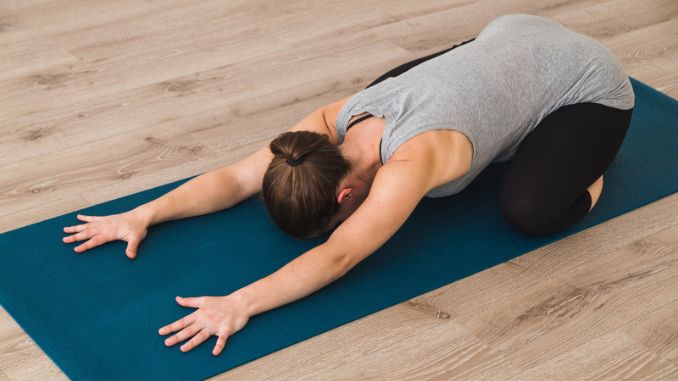
2. Knees to Chest
This exercise extends and firms up the pelvis and lower back to help decrease aches in the lumbar region.
Beginners should hold the stretch for 10-15 seconds and increase the holding time gradually. If you have severe lower back pain, slowly bring your knees towards your chest one at a time. People diagnosed with osteoporosis should not do this stretch since it could heighten the chance of compression fractures in their vertebrae.
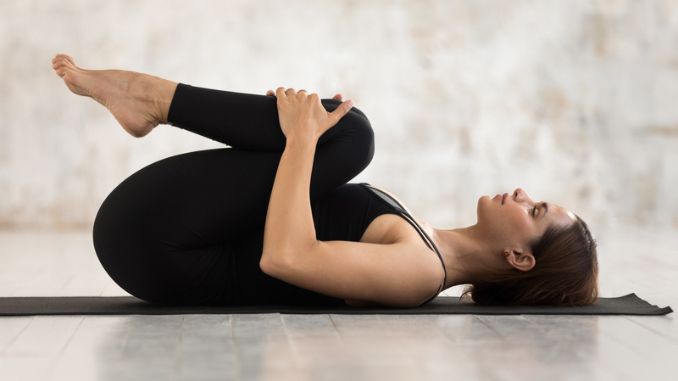
3. Seated Spinal Twist
This calming, restorative yoga pose benefits digestion and spine movement.
Hold the stretch for 10-15 seconds to strengthen the abdominal muscles, massage the internal organs and reduce lower back pain. Relax and repeat the movement on the opposite side. Gradually increase the holding time for as long as you need.

4. Pelvic Tilt
This exercise helps to relax and stretch your lower back muscles and can be particularly helpful for people who suffer from chronic low back pain. This slow movement lightly scoops the tailbone and focuses on the lumbar spine. Lift your hips off the floor, then hold and squeeze the glutes for 10-15 seconds. Lower your hips, relax and repeat the movement 2 to 3 times. If you’re experiencing acute pain, this exercise may be a bit too intense.
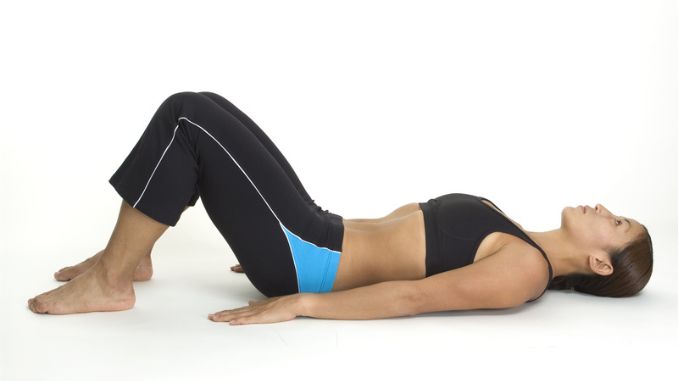
5. Glute Bridge
The glute bridge is another great exercise that can help to stretch and relax your pelvic muscles. These are the muscles that connect your hips and lower back. When tight and stiff, these muscles can pull your lower back into an awkward position, leading to pain. Doing this exercise regularly can help prevent that. The glute bridge strengthens your back muscles, glutes, and hamstrings, reducing stress and exhaustion in the back area. It can also be used to stretch your chest, neck, and spine while it is reinforcing your back.
Hold for 10-15 seconds and gradually increase the holding time. Avoid doing this exercise if you have abdominal hernias, are experiencing neck or knee pain, or have injuries in your neck, back, or shoulders.
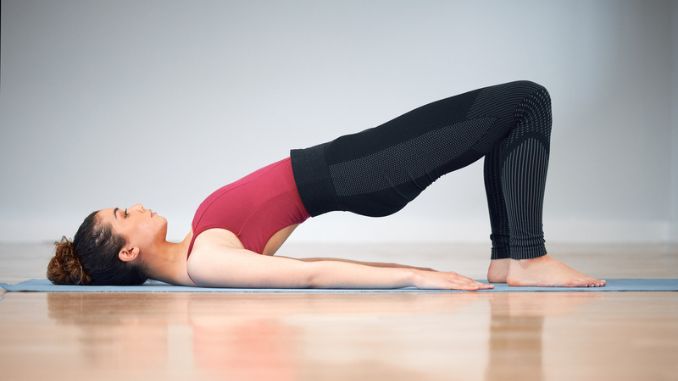
To maximize the benefits of these exercises, stretch until you feel good. The more often you do these exercises, the more benefits you will experience.
How to Make Exercise a Part of Your Routine to Reduce Lower Back Pain
The best way to relieve lower back pain is to make exercise a part of your daily routine. Start slowly and gradually increase your time and intensity as you become stronger. Do what works for you. If you prefer walking, running, or swimming, that is fine. The key is finding something you enjoy enough to do regularly. Make it part of your daily routine. You can do it first thing in the morning or right before bed. Be patient. Your lower back will heal, but it may take time.

3 Exercises to Avoid
Exercises benefit your health, but unfortunately, some are bad for your lower back. These include:
1. Leg Lifts
Lifting both legs simultaneously is often recommended for strengthening your abdominal muscles. However, performing leg lifts while lying on your back can be strenuous if your core muscles are weak, thus worsening back pain. An alternative option is lying down on your back with one leg extended and the other bent at the knee. Keep your lower back pressed against the floor, then carefully elevate the extended leg about 6 inches and remain in that position for a few moments before lowering it again. Do this 10 times, then switch legs.
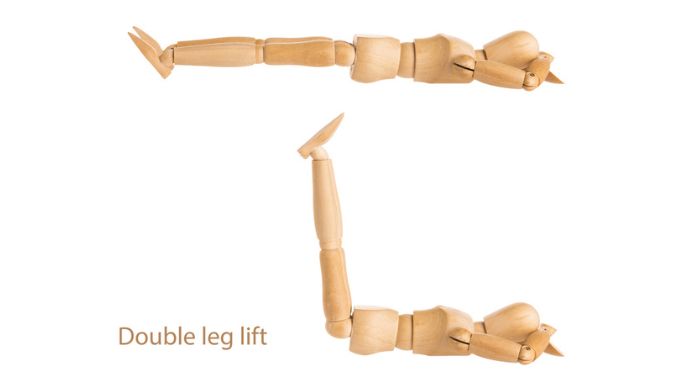
2. Toe Touches
When you do toe touches from a standing position, additional pressure is put on your vertebrae discs and ligaments. This can lead to an overextension of your lower back muscles and hamstrings.
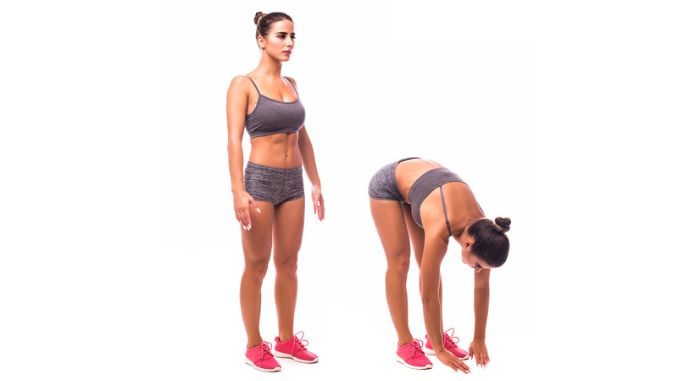
3. Sit-Ups
This Sit-ups can build up the muscles in the core or stomach area, however, the majority of individuals actually use the muscles in their hips when performing sit-ups. Sit-ups can cause a great amount of strain on the discs in the back.
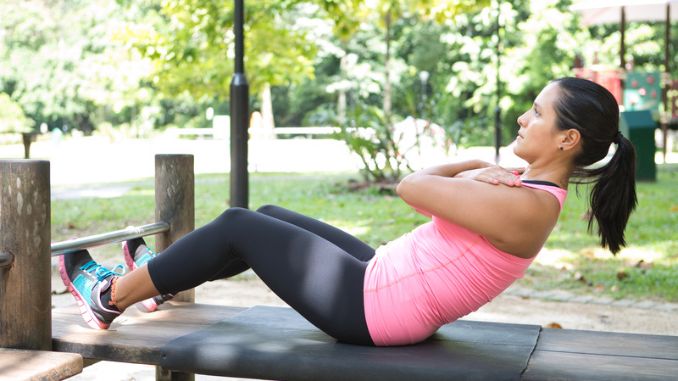
More Tips to Reduce Back Pain
- Stay hydrated. During exercise, you sweat, and that sweat can dehydrate your muscles. Drink plenty of water to stay hydrated.
- Eat a healthy diet. A well-balanced diet that includes enough protein, whole grains, fruits, and vegetables can help you recover from workouts and reduce pain.
- Stretch regularly. Stretching helps keep your muscles loose and improves flexibility.
- Get enough sleep. Sleep deprivation can cause pain and affect your ability to recover from workouts.
- Maintain good posture. Reducing the tension on the tendons in the back can prevent aches and muscular soreness.
Maintain a healthy weight. Carrying extra weight, specifically around your abdomen, can worsen back pain by changing your balance and putting additional stress on your lower back.
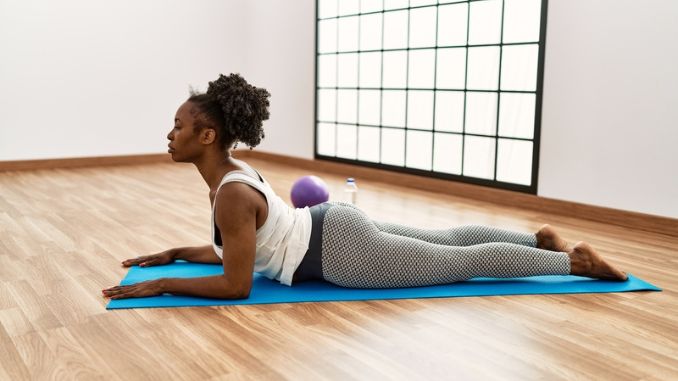
When to See a Doctor for Lower Back Pain
If you experience pain during exercise that is more than just minor discomfort and persists for more than 15 minutes, stop exercising and seek medical advice.
Conclusion
Make exercise a part of your daily routine, and you can relieve your lower back pain and prevent future back injuries. Stay hydrated and eat a healthy diet to maximize your results, so you can relieve your lower back pain and get back to feeling your best. It’s important to understand that lower back pain is extremely common and linked to many other conditions. If you have lower back pain, you should speak with your doctor to evaluate your condition and determine the best treatment options.
